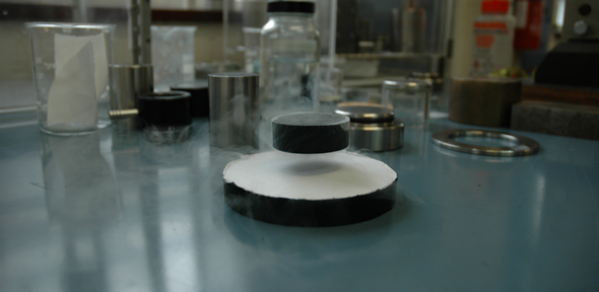Strongest magnetic field trapped in a superconductor is a world record

A world record for a trapped field in a superconductor, was achieved in 2014 by a team of engineers led by Professor David Cardwell.
Harnessing the equivalent of three tonnes of force inside a golf ball-sized sample of material that is normally as brittle as fine china, the team beat a record that had stood for more than a decade and the record has now been officially recognised by the Guinness World Records.
The Guinness World Records website says "A world record for a trapped field in a superconductor, was achieved in 2014 by a team of engineers led by Professor David Cardwell. The strongest magnetic field trapped in a superconductor is 17.6 tesla, achieved by researchers from the University of Cambridge (UK), the National High Magnetic Field Laboratory and the Boeing Company (both USA), as published in Superconductor Science and Technology, on 25 June 2014.
"The team used gadolinium boron carbon oxide (GdBCO) which is typically very brittle, then doped the structure with silver, and 'shrink wrapped' steel around the thumb-sized object to increase its strength. Superconductors which trap strong magnetic fields have a wide variety of applications, from Maglev trains to electricity storage."
17.6 Tesla is roughly 100 times stronger than the field generated by a typical fridge magnet - beating the previous record by 0.4 Tesla.
The research demonstrates the potential of high-temperature superconductors for applications in a range of fields, including flywheels for energy storage, 'magnetic separators', which can be used in mineral refinement and pollution control, and in high-speed levitating monorail trains.
Journal information: Superconductor Science and Technology
Provided by University of Cambridge




















